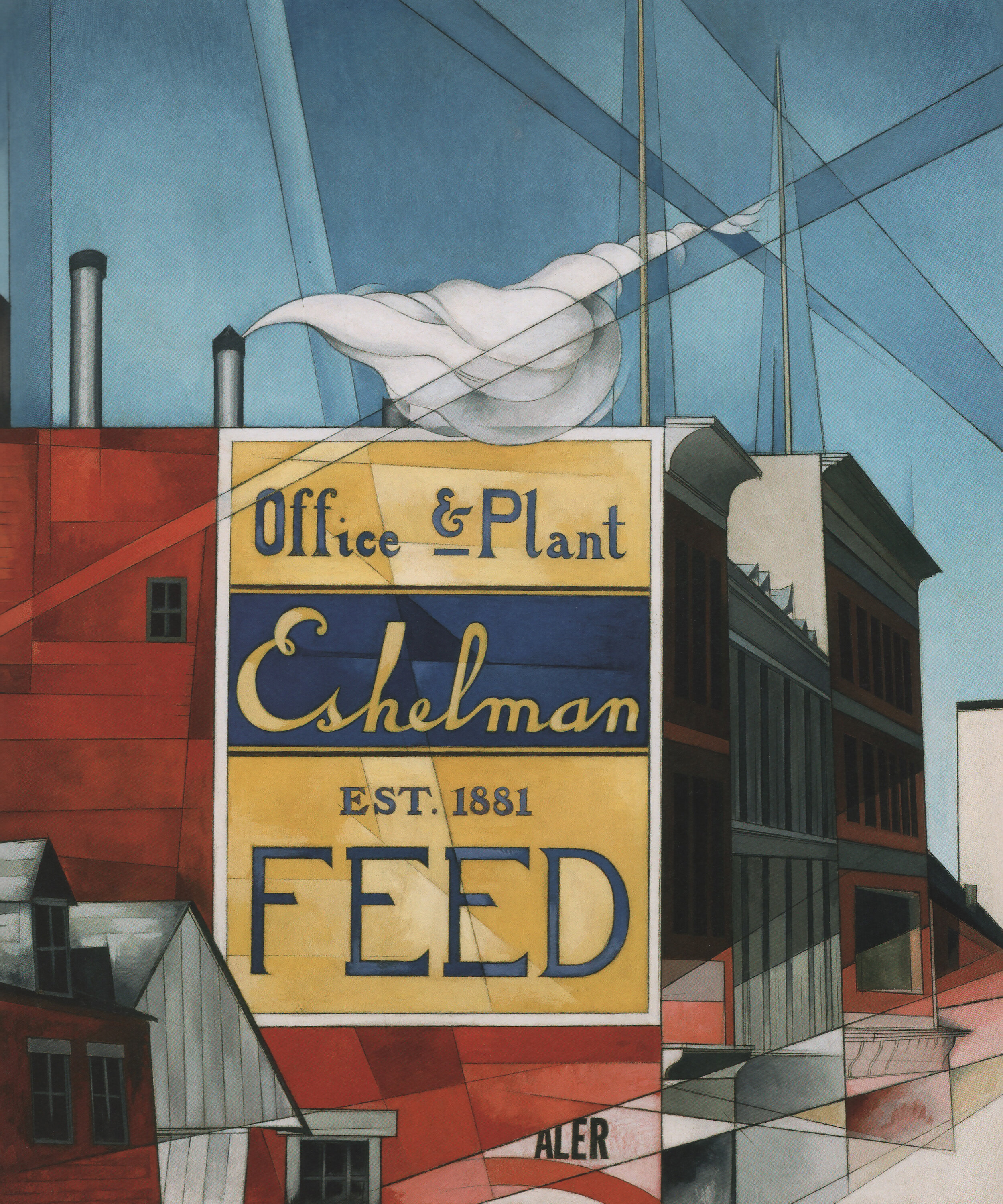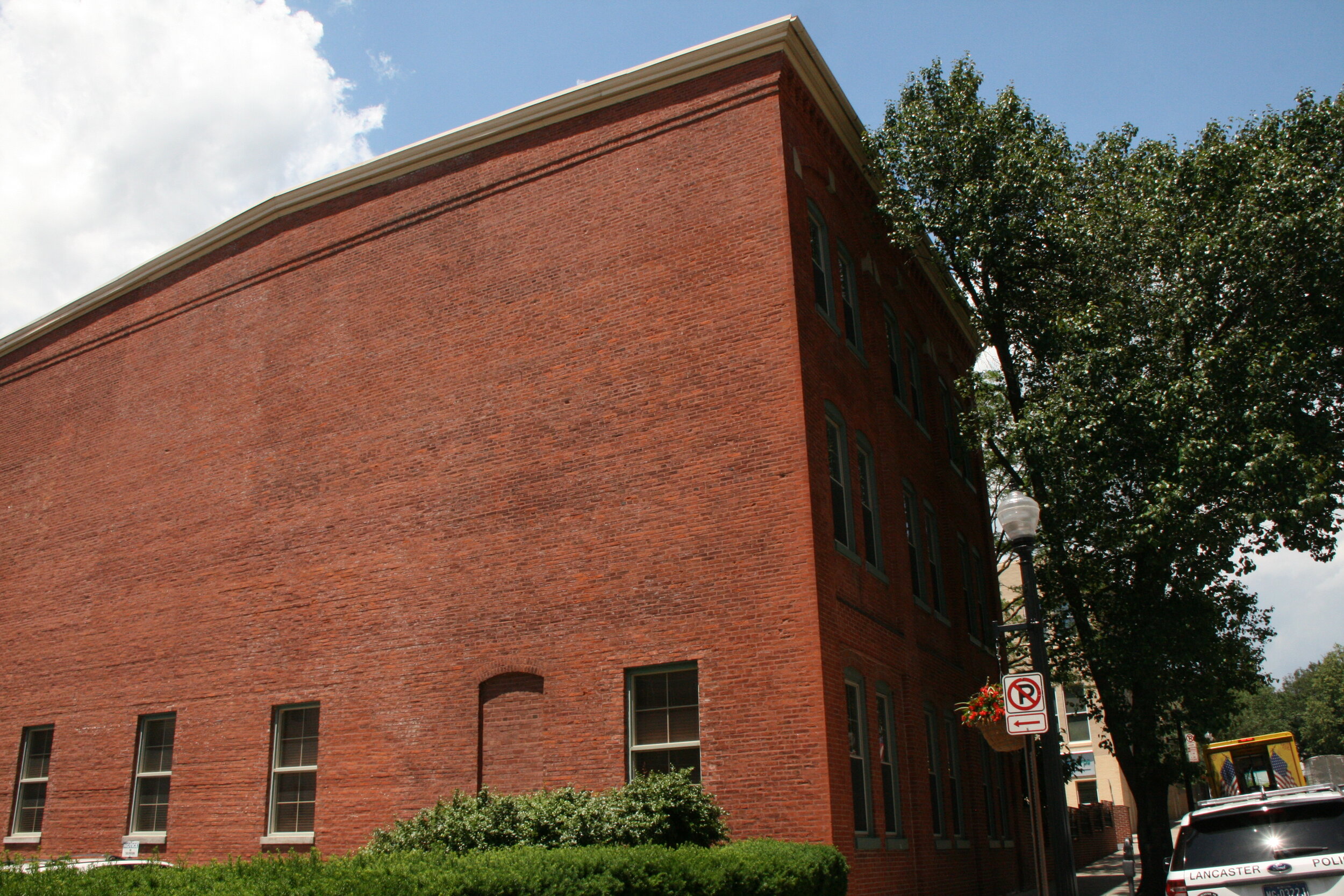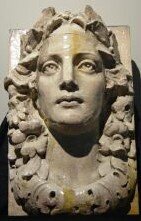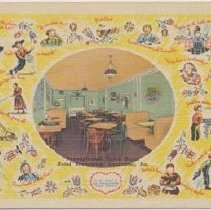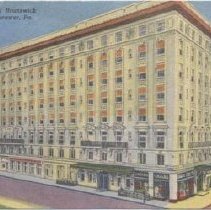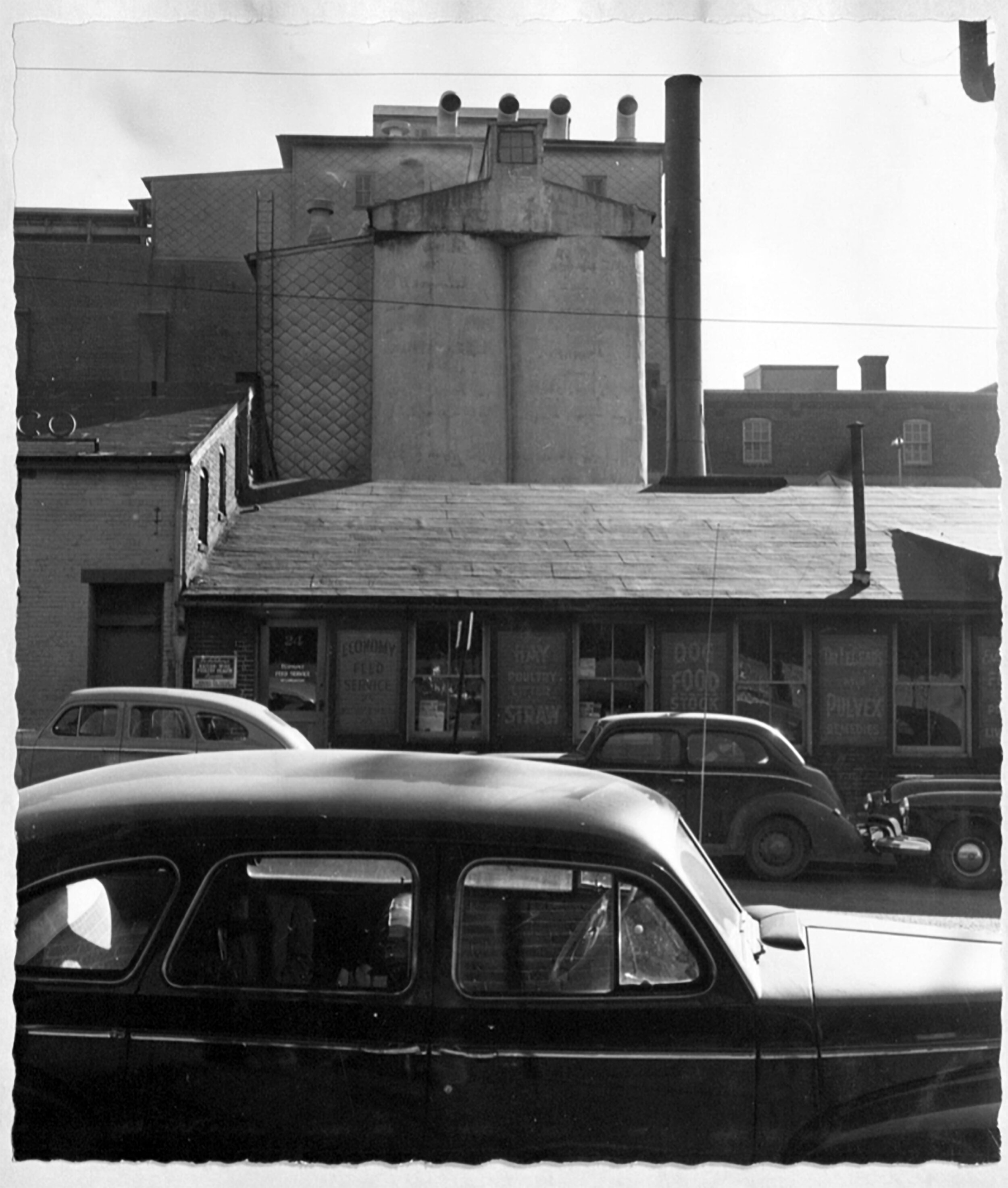Stop 7: Hotel Brunswick
Hotel Brunswick | 151 North Queen Street
Before we turn our attention the Hotel, I want to point out two sites across the street: the first is the brick townhouses on the Northwest side of N. Queen Street. They were the headquarters of the Eshelman Feed Company and were featured in Charles’ painting Buildings, Lancaster, 1930.
The second was directly across the street from the Hotel Brunswick—The Old Main Station of the PRR.
Courtesy of the Lancaster County Historical Society
Built in 1914, the hotel was well known for its Pennsylvania Dutch hospitality, and its great "home style" food. Also known for its "Seven Sweets & Seven Sours,” a selection of pickled vegetables and condiments.
Designed by C. Emlen Urban, the famous Lancaster City architect of the late 19th, and early 20th century, it was built in two stages. The first main part that sat at the corner of East Chestnut street, and North Queen streets, was built in 1914. There were covered entrances on both these streets, but the main entrance was facing Chestnut Street. They added on to the building by making the Chestnut street facade longer and adding a ballroom hall. This was done in 1925.
It was built by Paul Heine, an immigrant from Germany. This was the man who started the tourism industry here in Lancaster County, and made this area a fashionable place to visit.59
Demuth was a fierce defender of a person’s right to individual expression and the pursuit of happiness. He reveled in his role as an iconoclast, both artistically and personally. In places like New York, Provincetown, and Paris, where he was given the freedom and encouragement to be himself, he thrived. As Marsden Hartley said: “Charles had a great time being himself.”60 Lancaster, for the most part, was less encouraging of this behavior.
His friend George Biddle commented “[Demuth] loathed and was bored to death with Lancaster and the Pennsylvania Dutch.”61 This may have been true, certainly when Charles was studying in Philadelphia and experiencing Paris and New York for the first time, but he also had a love for the city and its rich history. Henry McBride recalled “…another time when I was in Lancaster and Charles and I were walking down the street, he pointed out to me the iron grillwork and other details of the sweet houses there. A stairway here, another charming detail there.”62 It may be significant that Demuth never included any of the people from Lancaster in his great Precisionist landscapes.
Perhaps that’s why he titled his famous painting of the Eshelman Grain Silos “My Egypt”. The silos stood just beyond the building I pointed out on Queen Street, but have since been demolished.
Demuth grew up in a deeply religious household and his mother made sure he was well versed in scripture. In Genesis chapters 41 and 42, we read the story of Joseph, pharoah's dream, and the building of grain silos in Egypt. On the surface, there is a parallel: in Egypt, they gathered a portion of grain from the entire land and stored it in silos in the cities; the Eschelman grain elevator was located on the 300 block of North Queen Street, 3 blocks from the center of Lancaster, and stored grain collected across the country and brought by railcar. But in chapter 42, we read about Joseph's brothers coming from Canaan (the promised land) to buy grain in Egypt so they would not die in the famine. They are forced to bow down before Joseph, begging for food. They are put in prison for 3 days before they are given the food and allowed to return home. And in the end, Egypt becomes a land of oppression for the Israelites. Now, I don't want to be too literal in my interpretation, but there are some interesting parallels in Demuth's life. If we look at the 7 fat years and the seven lean years, remembering that My Egypt was painted in 1927, there are some interesting synchronisms. The fat years would be 1914-1920. These are the years he spent the most time in New York and Provincetown (the promised land?) enjoying the freedom, nightclubs, and booze they had to offer. 1920 brings prohibition and the diagnosis of diabetes; the fat years are over and the lean years of 1921-1927 arrive. Demuth is forced to return home to Lancaster where his mother carefully measures his food and watches over him like a jailer. As Williams Carlos Williams noted: “The result was frightening. Charley faded to mere bones, but was able to live.”63 Or to echo the words of Pharoah's dream: scrawny and very ugly and lean. How painful it must have been for a dandy who was vain about his appearance. Lancaster was both the place that sustained him and where he slaved over his art.
We will now head east on Chestnut Street to the corner with Duke Street.
59 http://jayveejayaresjunk.blogspot.com/2009/06/old-hotel-brunswick-lancasterpa-scale_13.html
60 Hartley: “Farewell, Charles”. P559
61 Farnham: Life, Psychology, & Works, Vol. 3. P. 952
62 Farnham: Life, Psychology, & Works, Vol. 3. P. 983
63 Fahlman, Chimneys and Towers, p.74

